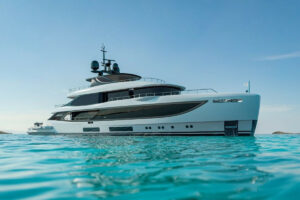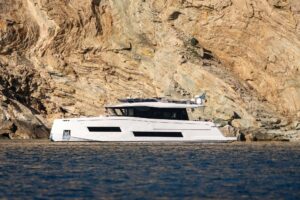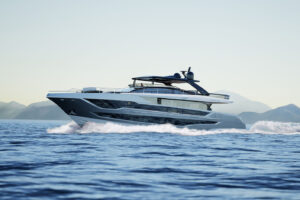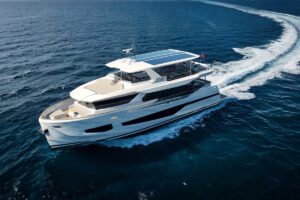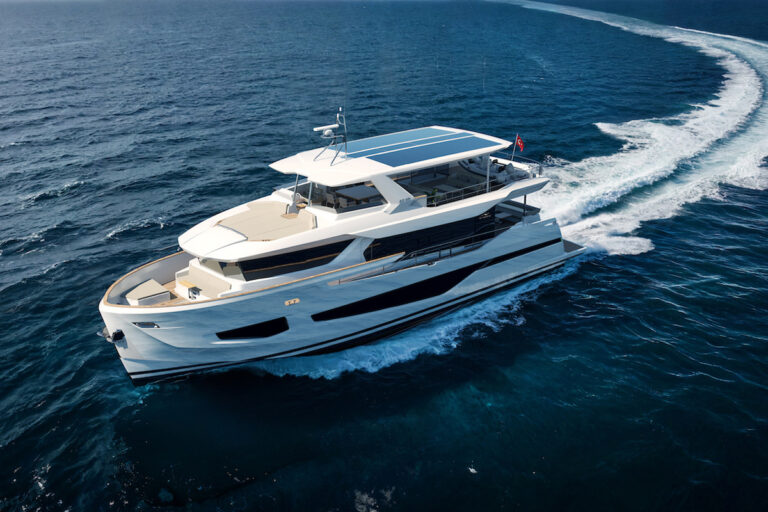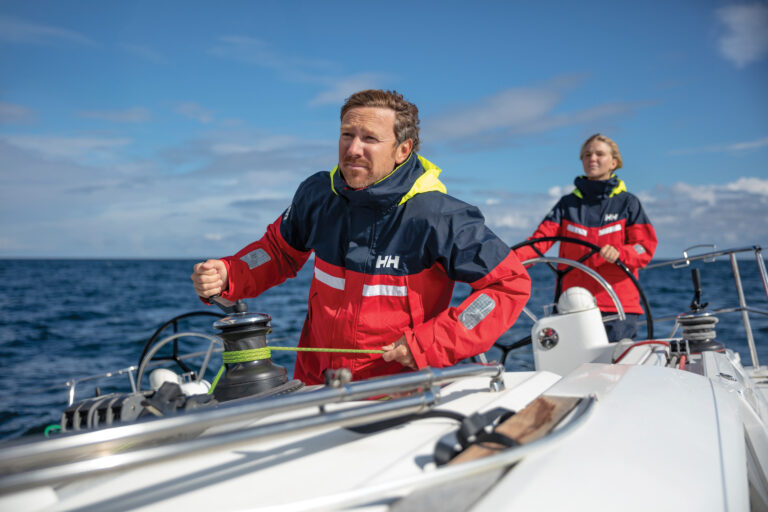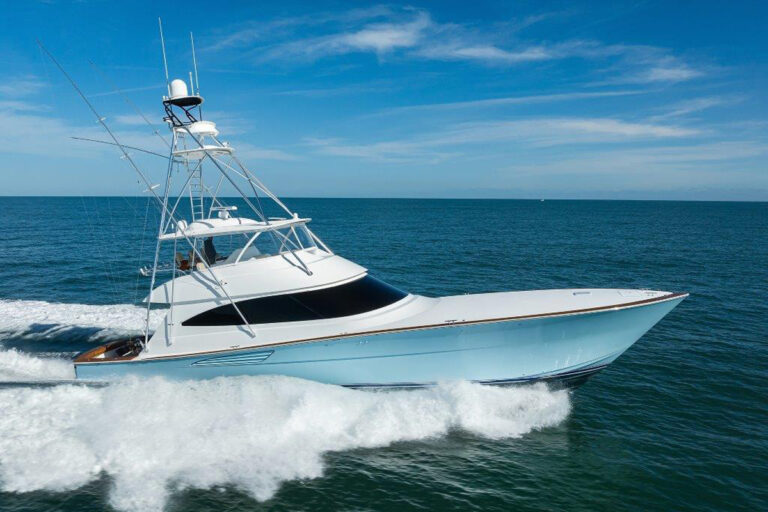Ocean Alexander’s history spans the revolution in Taiwanese yacht building that began in earnest in the 1970s. While the Taiwanese initially competed in terms of value, today a new generation of craftsmen and artisans produce some of the finest boats in their respective markets. Ocean Alexander’s new Altus series (48 and 42 feet) combines this earned wisdom and the economy of building in Mainland China. The new line allows Ocean Alexander to extend its brand and preserve its image.
“Our double-digit growth in the last four years has created capacity constraints”, said John Chueh, president of Ocean Alexander and the son of its founder. “Unlike the semi-custom Ocean Alexander, Altus is a full production product that will allow us to meet customer demand in a more timely fashion.”
Naval architect Ed Monk Jr. developed the profiles and general arrangements of both models, as he has for Ocean Alexander’s designs from the beginning.
“Our goal was to create an entirely new design that complemented our existing product lines”, Chueh said. The result is a pleasing blend of conservative West Coast proportion with a touch of European influence. The subtle rise of her chine forward and her modest flam and flare are sensible and what you would expect from Monk. Her straight sheer and sweptback superstructure are more challenging and create a contemporary look.
Her interior layout reflects the demands of American clients. The headroom, seating and berths are geared to American yachtsmen. The main cabin is open and airy. Pathways are not chiseled through built-in furniture, and the galley is not cloistered in a pit or hidden behind a partition, as is the case with some European-inspired designs. Anyone who is familiar with Ocean Alexander’s well-executed interiors will be pleased with the look and feel of the 48’s satin finished Burmese teak interior.
The saloon is aft, the galley and interior helm station a step above and forward. Belowdecks, the master stateroom is forward. The guest staterooms, one with a queen and one with upper and lower berths, share the second head.
A Luxury Package ($16,500) includes granite countertops, upgraded soft goods and an upgraded entertainment center, featuring a 42-inch plasma screen TV on a lift. I also recommend the optional Air-conditioning Package ($25,000), which includes an upgrade to a 12 kW Northern Lights generator (8 kW is standard).
In a compromise to styling, her low profile doesn’t allow deck access adjacent to the interior helm: you must go through the cockpit. Full walk-around side decks will make the 48 easy to handle.
Monk has left space in the cockpit for a table and chairs, and incorporated a transom door for access to the platform. The bridge includes a control station with helm and companion seating and a lounge area with a table. A wet bar with a refrigerator, sink and barbecue are optional ($3,960). Since there is no boat deck, carrying a tender will require a transom davit.
The 48 and the 42 are built in a new facility Ocean Alexander opened on the mainland an hour from Shanghai.
“As sole owners of the property, we have made a significant investment in the Altus program”, Chueh said. “It is four times the size of our current facility in Taiwan. Production began in 2003, and part of the transfer of technology has included the relocation of 20 seasoned craftsmen who now manage a workforce that numbers more than 150.”
All construction materials, machinery and equipment are imported. Marine plywood and interior hardware are shipped from Europe, fiberglass materials, system components and appliances come primarily from the United States. In my view, this is one of the advantages of boats built in the Far East: pumps, float switches, appliances and other expendable stuff are readily available in the United States.
Ocean Alexander builds the 48 in female tooling, using a combination of stitched and woven fiberglass reinforcements set in polyester and vinylester resins. A network of cored fiberglass stringers and resin-coated plywood bulkheads supports the hull. Balsa core, vacuum bagged into place, stiffens the topsides, decks and superstructure and reduces weight above the waterline. Exterior surfaces are finished in gelcoat.
Her engineroom is abaft the accommodations and is separated from the lazarette by a door. Access is possible from a hatch in the main cabin or a hatch in the cockpit sole. To facilitate major work, a portion of the cabin sole can be removed. Fuel is carried in aluminum wing tanks abaft the engines, and water is carried in stainless-steel tanks in the lazarette. Electrical and plumbing systems follow American Boat & Yacht Council recommendations. This familiar standard should help reduce the cost of labor in U.S. boatyards-where time is money.
My sea trial was on a chilly day at the foot of Biscayne Bay in Miami. The 22-knot breeze out of the north-northwest generated only a modest chop on these protected waters. The 48 seemed gifted with an easily driven hull. Given throttle, she rose to a plane with little fuss and reached a maximum speed of 25.4 knots at 3000 rpm. At 2700 rpm I recorded a speed of 20.9 knots-a solid cruising speed with a half load of fuel and an owner’s gear on board. I recorded low sound levels and the reading of 80 dB(A) in the saloon at 2700 rpm is worthy of note. The optional bow thruster ($8,500) would be a wise choice for cruising shorthanded.
Given the 48’s presentation and performance, Ocean Alexander clearly has successfully transferred its passion and experience to the mainland.
Contact: Ocean Alexander: 206-344-8566; www.oceanalexander.com. For more information, contact: (866) 922-4877

